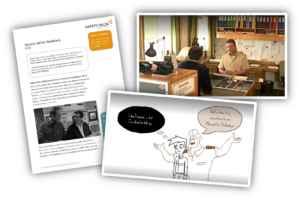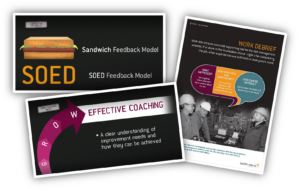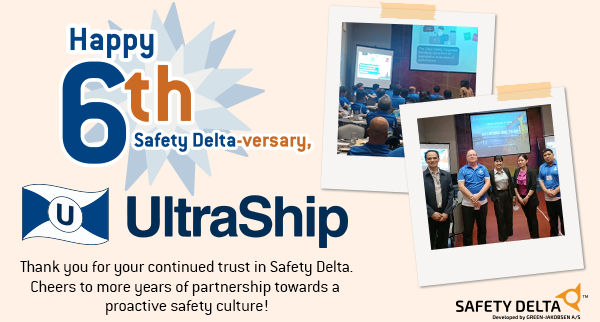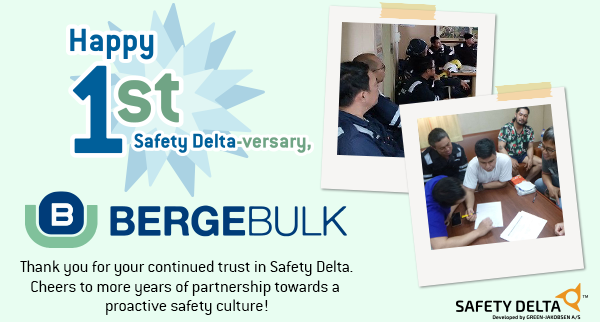Take a moment to imagine facing SIRE 2.0 – and other human factors policies – with confidence instead of stress.
How would it impact your crew and company as a whole?
Safety Delta helps you embed human factors management into your company culture. It helps your crew to develop confidence and successfully handle inspections, as safety becomes an integral part of ‘who they are’ and ‘how they do things.’
As a safety culture tool, Safety Delta inspires you to take human factors management from compliance … to commitment.
Manage human factors by aligning with industry principles
In part 1 of this article, we shared the first 4 of the 8 key principles that guide OCIMF’s approach to human factors.
Below, you will learn about the other 4 principles and how Safety Delta helps you align with them, along with some practical tools in the Safety Delta Learning Library (SDLL).
5 / People know the most about their work and are key to any solution
Human error is cited as the leading cause of incidents at sea, but the truth is that the crew are as much a source of safety as a source of error. Safety Delta recognises that people are still the centre of safety solutions. We provide tools to develop the crew’s safety behaviours and skills so they can make appropriate judgements in safety-critical situations.
With Safety I’s™, we aim to nurture behaviours that support a proactive and reliable safety culture. Safety Delta also encourages teamwork and team communication, so that the crew – who are at the front line of jobs – can better address changes at work, new hazards and risks, job-related challenges, and other safety matters.
Some SDLL tools that you can use:

6 / Workplace, tools, and activities can be designed to reduce mistakes and manage risks better
The workplace affects the crew members’ physical, mental, and emotional states, and in turn, their performance. Likewise, a single point of failure on any equipment may result in a hazardous situation. Thus, just as people’s skills should be developed, the workplace, tools, and activities on board should also be improved to help the crew eliminate or minimise risks.
Safety Delta fosters a safe and healthy environment on board so the crew can avoid reduced alertness and weakened performance. It also directs the crew to identify improvement needs in the design and controls of equipment. Further, Safety Delta helps by shifting the common mistake of treating the risk assessment as just compliance paperwork into treating it as a proactive process that must be done seriously by all crew members so they can better manage risks.
Some SDLL tools that you can use:

7 / Leaders contribute to shaping conditions that influence what people do
Leaders shape the culture that drives crew behaviours – how they interact with one another and their environment, make decisions, perform tasks, and work towards a common goal. Safety Delta inspires leaders to actively drive and engage in safety performance as well as motivate and support the crew at all times, so they can influence them to develop and maintain safety as part of their mindset and actions.
The SDLL covers important leadership skills. For instance, active listening helps leaders understand and address issues correctly. Giving appreciative feedback motivates the crew to repeat good work and safety behaviours. Giving clear instructions helps in the proper, safe, and smooth execution of jobs. Moreover, encouraging the crew to speak up increases the crew’s involvement and engagement levels.
Some SDLL tools that you can use:

8 / It matters how leaders respond when things go wrong and that they take the opportunity to learn
Leaders are in a good position to increase safety on board by motivating their crew to change their actions or behaviours and come up with ideas to make jobs safer. But how leaders do it spells the difference between a motivated and a defensive crew.
The SDLL covers topics that help leaders do it in proper and effective ways. Some examples are giving corrective feedback in a positive and structured way, providing coaching to help the crew improve particular safety skills, and conducting work debriefs to capture learning opportunities. The Safety Delta cycle also provides leaders with a clear picture of the areas they need to focus on, discuss, and develop.
Some SDLL tools that you can use:

Enjoy using all the learning materials as you carry on with your Safety Delta cycles!
Safety Delta familiarisation webinar
Our free Safety Delta Familiarisation II (Dialogue and Development) webinar is still ongoing. Click here to register.
Safety Delta-versaries


When: March 8, 2023
Where: Copenhagen, Denmark
Who: Safety Delta clients office staff
Invitation and details to follow.
Here’s an overview of what we’re going to talk about:
• What happened since we met last time
• Crew competencies we wish to develop
• Developing Safety Delta
• Safety Delta in relation to SIRE 2.0, RightShip, and human factors in the maritime industry
Among Us is a monthly digital newsletter, primarily for Safety Delta members, but also for those who want to get a ‘sneak peek’ at the experiences gained by those of us who are already ‘insiders’. It also presents the developments of Safety Delta.

